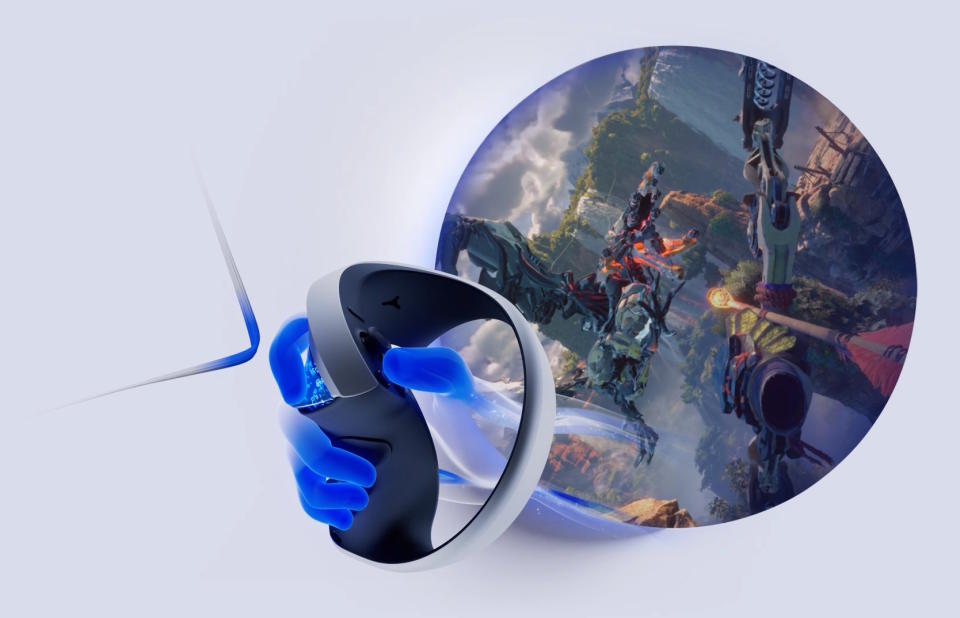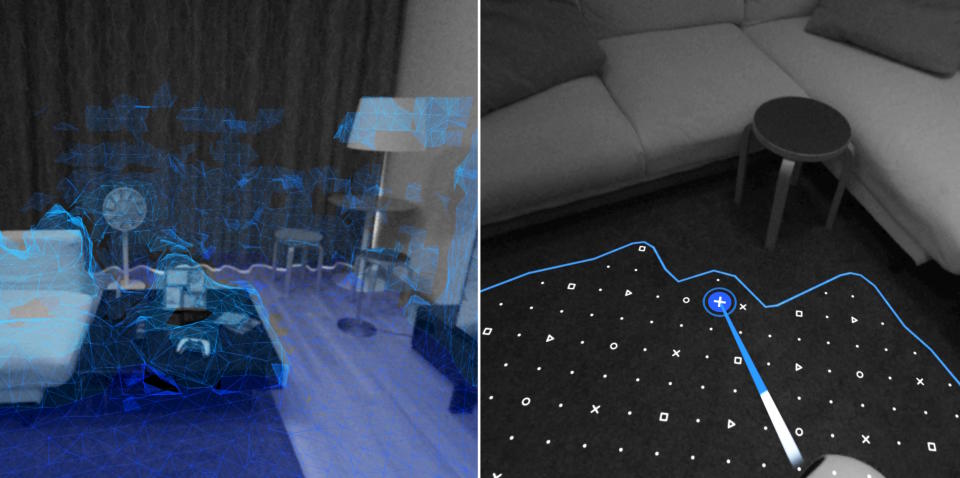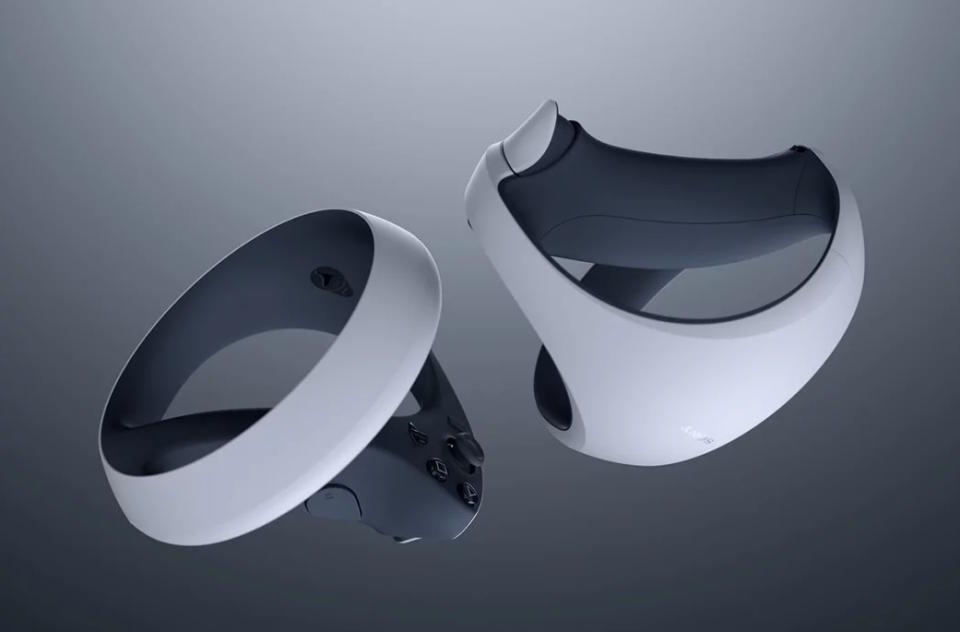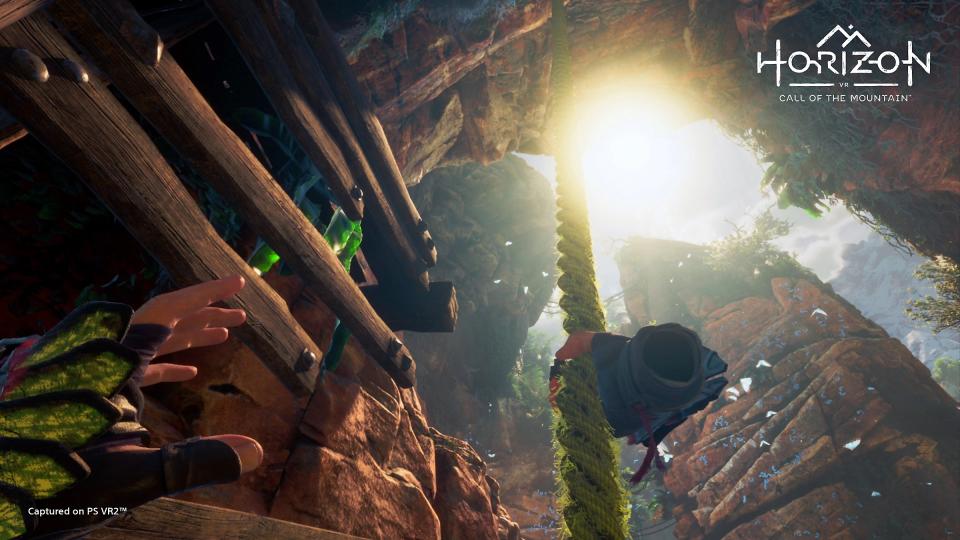Review: PlayStation VR2 is a huge leap that still can't escape its niche
The PlayStation VR2 is a simultaneously exciting and disappointing development in the virtual reality space. Well-specced, easy to set up and reasonably light and comfortable, Sony's latest still can't shake the fundamental issues that have prevented VR from going mainstream: a lack of compelling content and despite a brand new 4K OLED display, distracting image fidelity. It's the best VR has ever been, and I still can't bring myself to recommend it to anybody who wasn't already on board.
The PSVR was one of the first really consumer-accessible VR headsets, and was simple to set up for its time, but also relied on outdated controls in the instantly obsolete Move controllers and a TV-mounted camera. Still, it demonstrated that VR had a future in gaming, and that Sony was approaching it with an eye to accessibility and ease of use.
Last year the PSVR2 was announced, and based on specs alone it generally led the pack, with a few exceptions here and there. With a retail price of $550 all in, it struck a balance between the increasingly decent entry-level headsets (Oculus Quest 2) and more expensive, complex PC-bound ones (Vive Pro 2).
With a 4K OLED screen working at 120Hz, inside-out sensing (meaning no mounted cameras or emitters), and a pair of controllers cribbed from others and improved on, it seemed to embody a best of breed, its primary drawback being that it is a single-platform device.
And really, in practice that is exactly what PSVR2 is: best of breed, without meaningful compromise in hardware beyond having a single cable. It's a piece of cake to set up and accommodates room-scale as well as sitting and standing play styles. A variety of games are available on day one, including a Horizon: Zero Dawn spinoff and a Resident Evil title, and others in less-intense genres. So why do I still hesitate to recommend it?
Because VR gaming — as magical as it can be — is itself still a compromise. Even at its most seamless and convincing, VR is a sweaty, uncomfortable, artificial-feeling experience like sitting under a blanket looking at a 3D TV through a screen door. Within 10 seconds of putting on Sony's biggest hardware effort in years, I couldn't help thinking "So VR is still like this, huh?"

Image Credits: Sony
I know some will say that just makes me a hater. But I actually want VR to be good. I want it to be successful — I tried on that duct-taped Oculus prototype all those years ago and immediately understood the potential. And now, a decade later, I'm seeing a significant fraction of that potential — but nothing like what it would take for me to tell someone "hey, go spend six bills on this," unless they were ready to forgive a lot.
Still, I don't want to outright dismiss a perfectly good VR headset because it takes part in a developing ecosystem, so let's talk about what the PSVR2 does right.
Easy, breezy, beautiful-ish
First, the headset is attractively styled and reasonably light, and doesn't take up much space when it's not being used. Likewise the controllers, which are a bit puzzling and pretzel-like at first but eventually make sense. It's all very well thought out and put together.
Setting it up is also incredibly easy -- by far the easiest VR setup I've experienced. Plug in the headset to the USB-C port on your PS5 and it gives you a step-by-step tutorial of how to put it on, adjust the fit, which buttons do what and how to sync the controllers (literally just hitting the PS button on them).

Automatic scanning and customization of the play area. Image Credits: Sony
Establishing a play area is done automatically by looking around you in the passthrough mode, which is a black-and-white real-time view of your surroundings (and for some reason slightly unnerving). It builds a little play area using the clear space around you, which you can easily add to or subtract from by zapping it with a beam coming off your controller (it's quite fun actually).
Gaze detection is built in and setup is likewise quick and simple: follow the dot around, and in 20 seconds it's finished. It was accurate enough for non-precision stuff but I found it was impossible to look directly at the crosshair in Rez:Infinite, which was frustratingly always just half its width below my gaze. Repeated configurations didn't help, but I beat the first two areas unscathed anyway -- it was biased downwards but accurate and extremely responsive otherwise.
Once you're in a game, you'll get some familiar prompts, like whether you want to use gestures or the analog sticks for movement. I thought gestures for sure until I found that in Horizon: Call of the Mountain, the gesture to move forward is holding buttons down on both controllers and pumping your fists up and down. I laughed out loud and switched to the sticks, which weren't much better. Movement in VR is still an unsolved problem.
(I didn't have enough space to really try out full-room-scale play, but from the little I did the tracking seemed good if not particularly necessary for most games.)

PSVR2's controllers, looking like pretzels. Image Credits: Sony
Easily the most impressive aspect of the PSVR2 is the accuracy and responsiveness of the controllers. Although there's still a layer of "well, these fake, silly-looking hands aren't my hands," the immediate feedback of movement and rotation — not a jitter or jank to be seen — fools your brain very quickly. There's a reason climbing is at the center of the Horizon game; it changes awkward movement to something natural-feeling and fun. On flat surfaces the game feels silly; on cliffsides it is genuinely thrilling.
The display is great, as VR displays go. It's bright and vibrant and has nice deep darks because it's an OLED panel. The movement is smooth too, either running at a full 120Hz or interpolating a lower frame rate to that level. At 110 degrees, the field of view is among the best, much better than the tunnel vision in other headsets — but the vignetting is still very noticeable and occasionally distracting.
Hard limits
But even at 4K and 120Hz, you can't escape physics, and in fact your eyes are only an inch or two from the screen, with a complex Fresnel lens assembly between them. The result is — as it has pretty much always been — shimmering, chromatic aberration, smearing, aliasing, vignetting and inevitably eye fatigue.
To be clear, it looks as good or better than anything that's out there right now, especially in color intensity and depth. But even so it is not (and nor is the competition) what I would call sharp. I found there was a very narrow sweet spot where I got maximum clarity, and even then that clarity declines the further from the center of the viewport you go.
Other reviews have said that 2K per eye drastically reduces the aliasing, and that's true, but it is far from eliminated and the final image, though convincing due to the depth, fluidity and very nature of VR, still seemed to me hazy and chunky. Screenshots are not an accurate representation of what it's actually like, unfortunately.
In the context of a detailed and immersive game environment like a Horizon jungle or stylized Rez area, even the storybook tableaux of the Moss series, you may very well be able to look past the screen door effect and enjoy the moment, but it's always there, just waiting to be noticed. In more static scenes where details can be admired at leisure, the lack of clarity will be immediately apparent, especially to gamers used to seeing ultra-crisp imagery on big 4K screens 8-10 feet away. The idea that anyone would want to play a normal game or watch a movie on its "cinematic mode" virtual screen instead of on any decent (and I mean like $300 a few years ago, like mine) TV simply doesn't hold water.

A typical scene in the new Horizon game. Keep climbing! Image Credits: Sony
The fundamental problems of convergence and accommodation fatigue — your eyes not being able to choose their focus properly by redirecting and reshaping themselves — is also not alleviated by eye-tracking and foveated rendering, though these techniques hold promise. I'm not prone to motion sickness but after an hour or so in game my eyes and temples definitely ached and there's a lingering sense of optical distortion.
When you get down to it, though the experience has been very effectively streamlined and the technology improved immensely over the last few years, the games are still not worth the price of admission for most people. Certainly some dedicated players who really love Horizon or Resident Evil, and are constitutionally suited to VR playing, were sold on the PSVR2 long ago.
And to them I say, enjoy! It's better than ever, and super easy to set up, and the controllers are amazing! And there is the possibility of truly new and powerful gameplay experiences on offer!
But the advances of the PSVR2, significant as they are, seem unlikely to convince anyone who wasn't already convinced years ago. The games still feel like expensive showcases and though some titles benefit from VR (Rez with eye controls is really remarkable and cover shooters will shine), the level of imagery and immersion possible on a TV screen is still only increasing. I didn't need to wear a VR helmet to be frightened out of my mind deep in a cavern in Elden Ring. And Resident Evil Village was already scary as hell when I was looking around with a mouse!
Games that really take advantage of the possibilities of VR still feel tentative and half-formed, a hint of what is yet to come. I hope to eat my words in the next year or two when a true killer app appears. I would like nothing more.
But for now, VR is still simply too expensive for the experience it offers. And with the increasing image and audio quality of home TV setups, gaming isn't in dire need of an upgrade, let alone a sidegrade. The PlayStation VR2 accomplishes its goal of making a state of the art headset more simple and capable than ever, but unless you're already among the VR faithful, it can be safely considered just another promising step on the road to the holy grail.

 Yahoo Autos
Yahoo Autos 